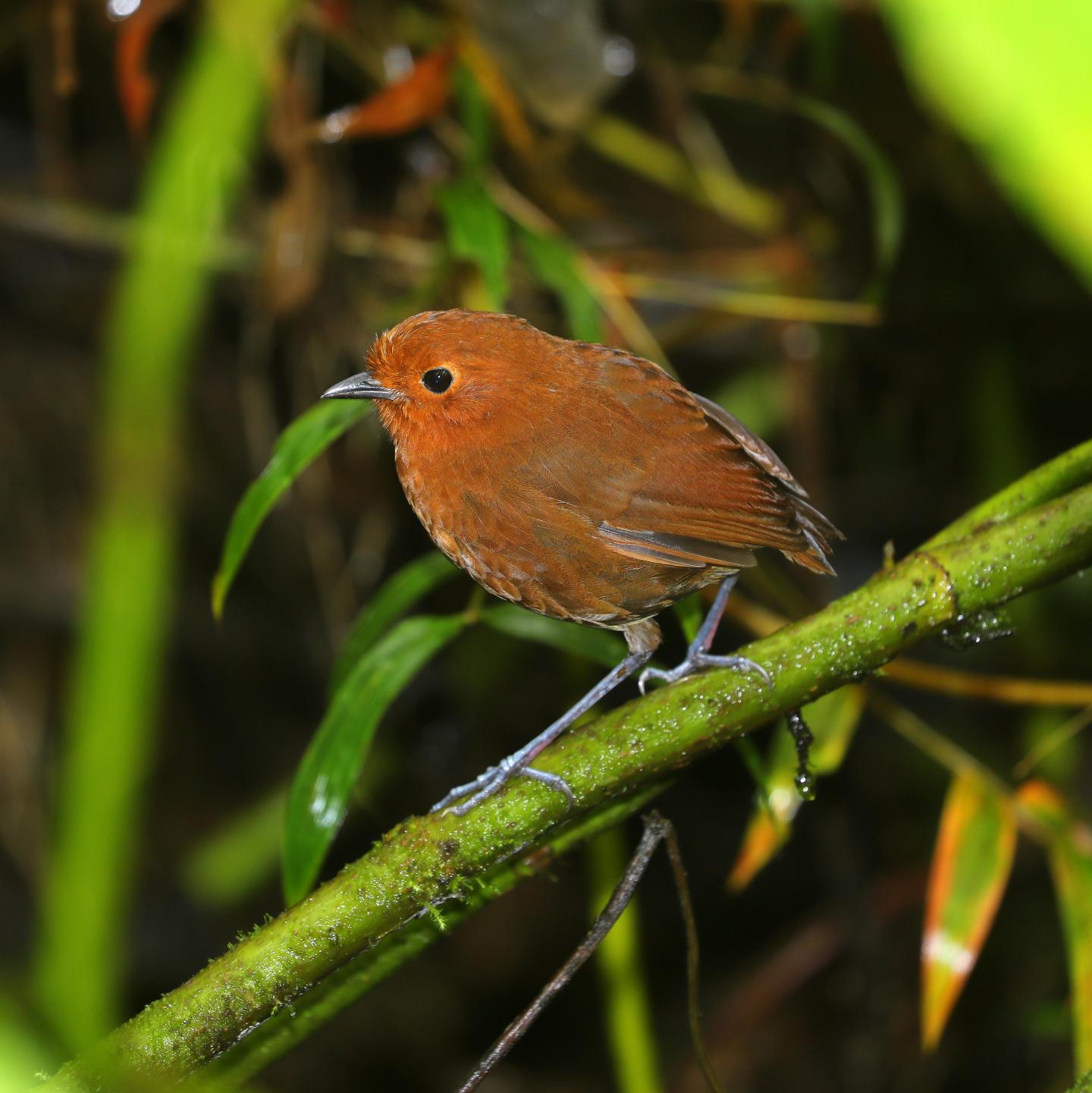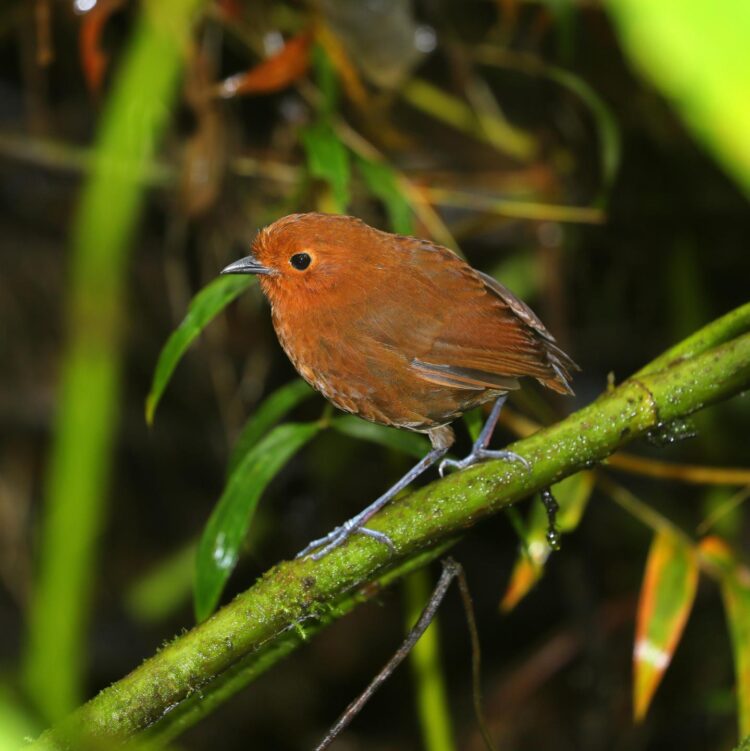Data gaps and species similarities may lead to undercounting biodiversity

Credit: Ça?an ?ekercio?lu
How many species of birds are there in the world? It depends on whose count you go by. The number could be as low as 10,000 or as high as 18,000. It’s tough to standardize lists of species because the concept of a “species” itself is a little bit fuzzy.
That matters because conserving biodiversity requires knowing what diversity exists in the first place. So biologists, led by University of Utah doctoral candidate Monte Neate-Clegg of the School of Biological Sciences, set out to compare four main lists of bird species worldwide to find out how the lists differ–and why. They found that although the lists agree on most birds, disagreements in some regions of the world could mean that some species are missed by conservation ecologists.
“Species are more than just a name,” Neate-Clegg says. “They are functional units in complex ecosystems that need to be preserved. We need to recognize true diversity in order to conserve it.”
The results are published in Global Ecology and Biogeography.
On the origin of species
The definition of a species isn’t clear-cut. Some scientists define populations as different species if they’re reproductively isolated from each other and unable to interbreed. Others use physical features to delineate species, while yet others use genetics. Using the genetic definition produces many more species, but regardless of the method, gray areas persist.
“Species are fuzzy because speciation as a process is fuzzy,” Neate-Clegg says. “It’s a gradual process so it’s very difficult to draw a line and say ‘this is two species’ vs. ‘this is one species.'”
Also, he says, physical features and genetic signatures don’t always diverge on the same timescale. “For example,” he says, “two bird populations may diverge in song and appearance before genetic divergence; conversely, identical populations on different islands may be separated genetically by millions of years.”
Comparing the lists
At this point in the story, it’s time to introduce four lists, each of which purports to include all the bird species in the world. They are:
- The Howard and Moore Checklist of the Birds of the World
- The eBird/Clements Checklist of Birds of the World
- The BirdLife International Checklist of the Birds of the World
- The International Ornithological Community (IOC) World Bird List
“Being active field ornithologists who are always trying to ID bird species means that one is always faced with the issue of some species being on one list but not the other,” says Çağan Şekercioğlu, associate professor in the School of Biological Sciences. “So our field experience very much primed us to think about this question and inspired us to write this paper.”
The lists have different strengths depending on their application. The BirdLife International list, for example, integrates with the IUCN Red List, which reports on species’ conservation status. The IOC list is updated by experts twice a year, Şekercioğlu says. The list is open access with comparisons to other major lists, and changes are documented transparently.
“But as a birdwatcher, I use eBird all the time, which uses the Clements checklist, and that dataset is very powerful in its own right,” Neate-Clegg says. “So there is no single best option.”
One example of the disagreement between lists might be the common bird Colaptes auratus. The eBird list calls it the northern flicker, a woodpecker. But the BirdLife International list delineates the eastern population as the yellow-shafted flicker and the western population as the red-shafted flicker.
In 2020, Neate-Clegg and his colleagues read a study that compared the raptor species on each list, finding that only 68% of species were consistent among all four lists.
“We thought it would be interesting to investigate taxonomic agreement for all 11,000 bird species,” Neate-Clegg says. “More importantly, we wanted to try and work out what species characteristics led to more or less taxonomic confusion.”
They began by collecting the most recent version of each list (the IOC checklist is updated biannually, the researchers write, and the Clements and BirdLife lists annually, while Howard and Moore has not been updated since 2014) and trimming them down to exclude subspecies and any extinct species. Using a few other data processing rules, they assigned a single name to every possible species across all four lists. Then the comparisons began.
Where the lists agree and disagree
The researchers found that the four lists agreed on the vast majority of bird species–89.5%. For the remaining 10.5%, then, they started to look for patterns that might explain the disagreement. Some of it was likely geographical. Birds from the well-studied Northern Hemisphere were more likely to find agreement than birds from the relatively understudied Southeast Asia and the Southern Ocean.
Some of it was habitat-based. Agreement was higher for large, migratory species in relatively open habitats.
“I think the most surprising result was that agreement was not lower for highly forest-dependent species,” Neate-Clegg says. “We expected these denizens of the rainforest floor to be the most cryptic and hard to study, with more uncertainty on their taxonomic relationships. Yet we found it was actually species of intermediate forest dependency that had lower taxonomic agreement. We believe that these species move about just enough to diverge, but not so much that their gene pools are constantly mixing.”
And part of the issue with species classification on isolated islands, such as those in Southeast Asia and the Southern Ocean, was a phenomenon called “cryptic diversification.” Although islands can foster species diversification because of their isolation, sometimes two populations on different islands can appear very similar, even though their genes suggest that they’ve been isolated from each other for millions of years. So, depending on the definition, two populations could count as two species or as only one.
“In addition,” Neate-Clegg says, “it’s very hard to test the traditional biological species concept on island fauna because we cannot know whether two populations can interbreed to produce fertile young if they are geographically isolated.”
Why it matters
So what if some people disagree on species designations? Conservation actions are usually on the species level, Neate-Clegg says.
“If a population on one island goes extinct, people may care less if it’s ‘just a subspecies,'” he says. “And yet that island is potentially losing a functionally unique population. If it was recognized as a full species it might not have been lost.”
Neate-Clegg hopes the study points ornithologists towards the groups of species that merit additional attention.
“We also want conservation biologists to recognize that cryptic diversity may be overlooked,” he adds, “and that we should consider units of conservation above and below the species level.”
###
Find the full study here.
Media Contact
Paul Gabrielsen
[email protected]
Original Source
http://attheu.
Related Journal Article
http://dx.





